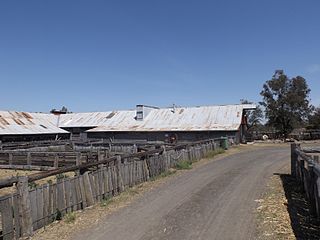The Australian labour movement began in the early 19th century and since the late 19th century has included industrial and political wings. Trade unions in Australia may be organised on the basis of craft unionism, general unionism, or industrial unionism. Almost all unions in Australia are affiliated with the Australian Council of Trade Unions (ACTU), many of which have undergone a significant process of amalgamations, especially in the late 1980s and early 1990s. The leadership and membership of unions hold and have at other times held a wide range of political views, including communist, socialist and right-wing views.

The Coal strike of 1902 was a strike by the United Mine Workers of America in the anthracite coalfields of eastern Pennsylvania. Miners struck for higher wages, shorter workdays, and the recognition of their union. The strike threatened to shut down the winter fuel supply to major American cities. At that time, residences were typically heated with anthracite or "hard" coal, which produces higher heat value and less smoke than "soft" or bituminous coal.

The Australian Workers' Union (AWU) is one of Australia's largest and oldest trade unions. It traces its origins to unions founded in the pastoral and mining industries in the late 1880s and it currently has approximately 80,000 members. It has exercised an outsized influence on the Australian Trade Union movement and on the Australian Labor Party throughout its history.

The Queensland Council of Unions (QCU) is a representative, an advocacy group, or peak body, of Queensland trade union organisations, also known as a labour council, in the Queensland, Australia. As of 2020, 26 unions and 13 regional branches were affiliated with the QCU. The QCU represents unions covering around 350,000 Queensland workers. It is affiliated with the Australian Council of Trade Unions (ACTU). Its offices are located in the suburb of South Brisbane, Queensland. As a peak body for the Queensland trade unions, the objective of the QCU is to achieve industrial, social and political justice for Queensland workers. The management structure of the QCU is made up of a committee of management and an executive of representatives comprised from affiliated unions.
A labour council, trades council or industrial council is an association of labour unions or union branches in a given area. Most commonly, they represent unions in a given geographical area, whether at the district, city, region, or provincial or state level. They may also be based on a particular industry rather than geographical area, as for example, in the Maritime Council of Australia which co-ordinated the waterfront and maritime unions involved in the 1890 Australian Maritime Dispute.

The 1891 shearers' strike is one of Australia's earliest and most important industrial disputes.

The Federated Ship Painters and Dockers Union (FSPDU) was an Australian trade union which existed between 1900 and 1993. It represented labourers in the shipbuilding industry, covering "mostly work associated with chipping, painting, scrubbing [and] cleaning [ships], working in every size of tanks, cleaning boilers, docking and undocking vessels, and rigging work".
The 1946 Pilbara strike was a landmark strike by Indigenous Australian pastoral workers in the Pilbara region of Western Australia for human rights recognition, payment of fair wages and working conditions. The strike involved at least 800 Aboriginal pastoral workers walking off the large pastoral stations in the Pilbara on 1 May 1946, and from employment in the two major towns of Port Hedland and Marble Bar. The strike did not end until August 1949 and even then many Indigenous Australians refused to go back and work for white station owners.

The 1929 Timber Workers strike was a labour dispute in Australia caused by Justice Lukin of the Arbitration Court handing down an industrial award decision on 23 December 1928 to reduce the wages and increase the hours for 20,000 timber workers from a 44-hour week to a 48-hour week. It was the first strike in Australia after the onset of the Great Depression.
The National Amalgamated Coal Workers' Union was a trade union in the United Kingdom which existed between 1889 and 1922. It represented coal porters and carmen.

The Tree of Knowledge was a heritage-listed tree in Oak Street, Barcaldine, Barcaldine Region, Queensland, Australia, that was poisoned and killed in 2006. It was a 200-year-old Corymbia aparrerinja ghost gum. It was added to the Queensland Heritage Register on 21 October 1992.

The Labor Council of New South Wales, branded Unions NSW, is the peak body for trade unions in the state of New South Wales, Australia. As of 2005 there are 67 unions and 8 Rural and Regional Trades & Labor Councils affiliated to the Labor Council, representing 800,000 workers in NSW. It is registered as the State Peak Council of Employees under Section 215 of the Industrial Relations Act 1996 (NSW). The council is affiliated with the Australian Council of Trade Unions (ACTU).
Firemen and Deckhands' Union of New South Wales (FDU) was an Australian trade union existing between 1901 and 1993. The union covered deckhands employed on ferries, tugs, launches, lighters and hoppers, as well as enginemen, wharf hands, turnstill hands, change hands, firemen, motorboat coxmen and assistants. The FDU operated a closed shop, with all labour in the industry provided to employers through the union.

The Queensland Shearers Union was one of the first Australian unions, founded in the latter half of the nineteenth century. The union was instrumental in the development of the 1891 Australian shearers' strike, seen today as a key development in the Australian labour movement. Together with other unions the Queensland Shearers Union was the genesis of the Australian Workers' Union.

The 1892 Broken Hill miners' strike was a sixteen-week strike which was one of four major strikes that took place between 1889 and 1920 in Broken Hill, NSW, Australia.

Gilbert Stephen Casey was a trade unionist, agitator of the early Australian labour movement and a utopian socialist.

After the 1890 Australian maritime dispute and the 1891 Australian shearers' strike both of which were long, drawn out affairs in which trade unions were defeated, running out of funds, actions by increasingly militant and desperate unions led up to perhaps the most violent shearers' strike, in 1894.

Jondaryan Woolshed is a heritage-listed shearing shed at Evanslea Road, Jondaryan, Queensland, Australia. It was built in 1859-60 to replace an earlier, smaller woolshed on the former Jondaryan pastoral station, which was at one stage the largest freehold station in Queensland. The woolshed was the scene of significant labour conflict in the late 1880s and early 1890s, as the station became a test case for the new Queensland Shearers Union in the lead-up to the 1891 Australian shearers' strike.

Shearers' Strike Camp Site is a heritage-listed campsite on the bank of Lagoon Creek, Barcaldine, Barcaldine Region, Queensland, Australia. It was built in 1891 by shearers on strike. It was added to the Queensland Heritage Register on 21 October 1992.
The 1908 Blackball miners' strike was industrial action that happened when seven miners in the small town of Blackball, on New Zealand's West Coast, were dismissed for taking longer than their allocated fifteen minutes, for lunch. This was one of many issues that were causing discontent within the coal-mining industry that was set up as a series of capitalist enterprises to meet the shipping needs of Britain as an imperial power. When Blackball township was established, the mining company provided low-quality living and working conditions for the miners and after the town became populated by immigrants with union experience overseas, some of the grievances that eventually resulted in the strike emerged. The strike has been seen as a formative event in New Zealand history because of the successful outcome for the miners from the eleven-week strike by the use of direct action and organised unionism. This was the first real challenge to the Arbitration Court, set up under legislation by the Liberal Government in 1894 to support mediation in industrial disputes, and highlighted the difficulties of getting a resolution because of the wide range of political, social and cultural factors that resulted in a degree of intransigence by both the miners and the mine company. A number of the leading strikers subsequently became leaders in the political labour movement.












